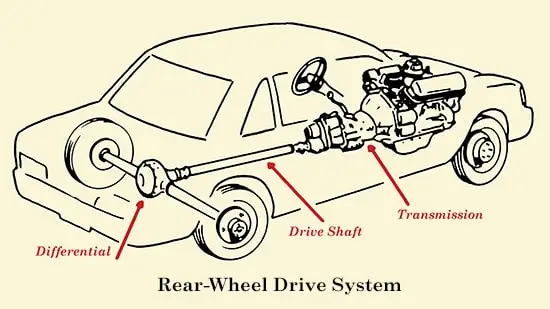How does a car’s drive shaft work?


The car drive shaft is an essential component of a vehicle’s powertrain system. It plays a crucial role in transmitting power from the engine to the wheels, allowing the car to move forward. In this article, we will explore how a car’s drive shaft works, its mechanism, function, design, components, and the overall drive shaft system.
Understanding the Drive Shaft Mechanism
The drive shaft is a long, cylindrical metal tube that connects the transmission or transfer case to the differential in a rear-wheel-drive or four-wheel-drive vehicle. Its primary function is to transfer torque from the engine to the wheels, enabling the vehicle to move.
The drive shaft mechanism consists of several key components, including:
1. Universal Joints: These joints are located at each end of the drive shaft and allow for flexibility and movement. They enable the drive shaft to accommodate changes in angle and length as the suspension moves up and down.
2. Slip Yoke: The slip yoke is a splined metal component that connects the drive shaft to the transmission or transfer case. It allows for the length of the drive shaft to change as the suspension moves.
3. Center Support Bearing: In longer drive shafts, a center support bearing is used to provide additional support and reduce vibrations. It is typically located in the middle of the drive shaft and is mounted to the vehicle’s frame.
How Does a Drive Shaft Work?
When the engine generates power, it is transferred to the transmission or transfer case. From there, the power is transmitted to the drive shaft through the slip yoke. As the drive shaft rotates, the universal joints allow for changes in angle and length, ensuring that the power is transferred smoothly.
The drive shaft then transmits the power to the differential, which is responsible for distributing torque to the wheels. The differential allows the wheels to rotate at different speeds, especially when turning corners. This ensures that the wheels can maintain traction and prevent skidding.
The Function of a Drive Shaft
The primary function of a drive shaft is to transfer power from the engine to the wheels, enabling the vehicle to move forward. It plays a crucial role in the power transmission and torque transfer process. Without a properly functioning drive shaft, the wheels would not receive the necessary power to propel the vehicle.
Design and Components of a Drive Shaft
Drive shafts are designed to be strong, durable, and lightweight. They are typically made of steel or aluminum, depending on the vehicle’s specifications and requirements. Steel drive shafts are more common in heavy-duty applications, while aluminum drive shafts are often used in lighter vehicles to reduce weight.
The drive shaft consists of a hollow tube with welded or forged yokes at each end. The yokes are connected to the universal joints, which allow for movement and flexibility. The slip yoke connects the drive shaft to the transmission or transfer case, while the center support bearing provides additional support in longer drive shafts.
The Drive Shaft System in Automotive
In the automotive industry, the drive shaft system is an integral part of rear-wheel-drive and four-wheel-drive vehicles. It is responsible for transmitting power from the engine to the wheels, allowing the vehicle to move. The drive shaft system works in conjunction with other components, such as the transmission, differential, and suspension, to ensure smooth power delivery and optimal performance.
Conclusion
The car drive shaft is a critical component of a vehicle’s powertrain system. It plays a vital role in transmitting power from the engine to the wheels, enabling the vehicle to move forward. Understanding how a drive shaft works, its mechanism, function, design, and components is essential for maintaining and troubleshooting any issues that may arise. By ensuring the proper functioning of the drive shaft system, you can enjoy a smooth and efficient driving experience.
Recent Posts
How do I create an engaging and informative online quiz or assessment?
Creating an engaging and informative online quiz or assessment can be a powerful tool for… Read More
What are the most effective methods for managing and reducing work-related stress in the hospitality industry?
Work-related stress is a common issue in the hospitality industry, where employees often face long… Read More
How can I improve my assertiveness and communication skills in a leadership position?
In a leadership position, assertiveness and effective communication skills are crucial for success. Being able… Read More
What are the key elements of a successful employee recognition and rewards program?
Employee recognition and rewards programs play a crucial role in motivating and engaging employees, as… Read More
How do I effectively manage and respond to customer feedback and reviews?
Customer feedback and online reviews play a crucial role in shaping a company's reputation and… Read More
What are the best strategies for effective time management as a stay-at-home parent?
Effective time management is crucial for stay-at-home parents who juggle multiple responsibilities on a daily… Read More